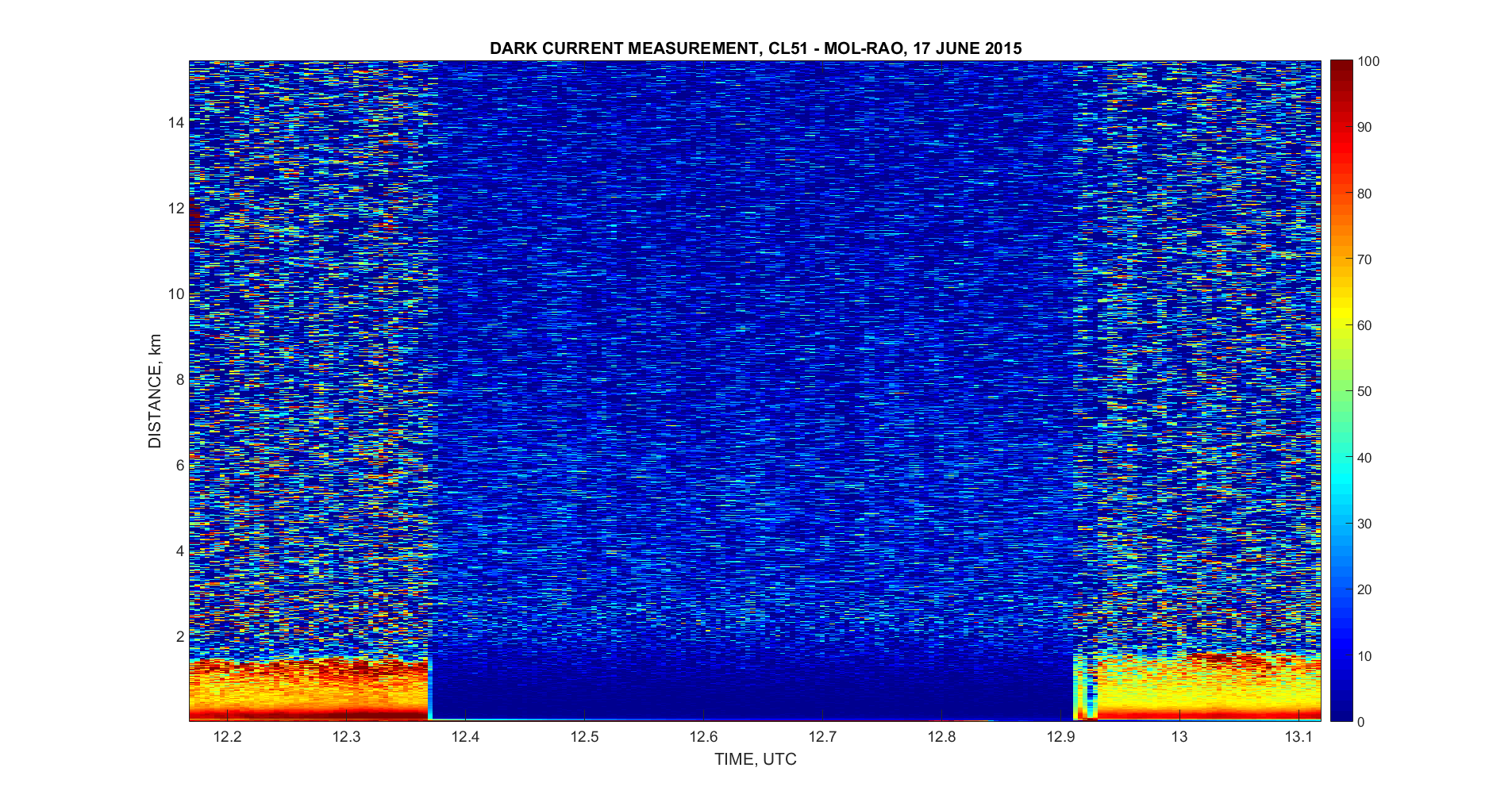In order to evaluate the signal distortions in the free troposphere, Christoph Münkel performed a dark current measurement.
Here are some plots of these measurements by Frank:
| CL51 RAO | CL51 CG |
|---|---|
 |  |
 |
 |
 |
 |
 |
 |
comments and some conclusions:
- There is a belly-like shape in the RAO instrument, CL51CG shows a oscillation with smaller amplitude than CL51RAO.
- Both instruments have a very large signal in the first height bin(s)
- plots of single profiles (blue) show increasing noise (with r^2) up to 2.4km and a constant noise level above this height (effect of h2-parameter)
open questions:
- why is the large signal in the first two height bins decreasing with time? where it comes from?
- how would the dark current profile look like when the measurement would be repeated after some weeks or after a transport?
- are the belly and ocillations constant over time? could we substract them from the signal?
Some short answers from Vaisala:
- the advantage of single lens ceilometers like CL51 is the ability to distinguish between signal from the very near atmosphere and from dirt, birds, and other things close to the window. The slightly damaged and not perfectly placed termination hood is such a thing causing backscatter in the very near range. The compensation algorithm for such signal acts slowly, that is why there is still enlarged backscatter in the first two height bins. On the other hand this signal is not large enough to cause any disturbance to the part of the profile above that is completely extinguished by the termination hood. So this effect is irrelevant regarding the subject of the belly-like shape that has been observed.
- repeating the measurement would give a very similar profile shape
- belly and oscillations are fairly constant over time. As the termination hood is available at MOL-RAO, these measurements should be repeated every now and then. Later CL51 firmware versions (CL51CG since delivery, CL51RAO since 16.07.) involve an improved compensation of signal impurities caused by high temperatures. This will probably reduce the observed CL51RAO belly.
